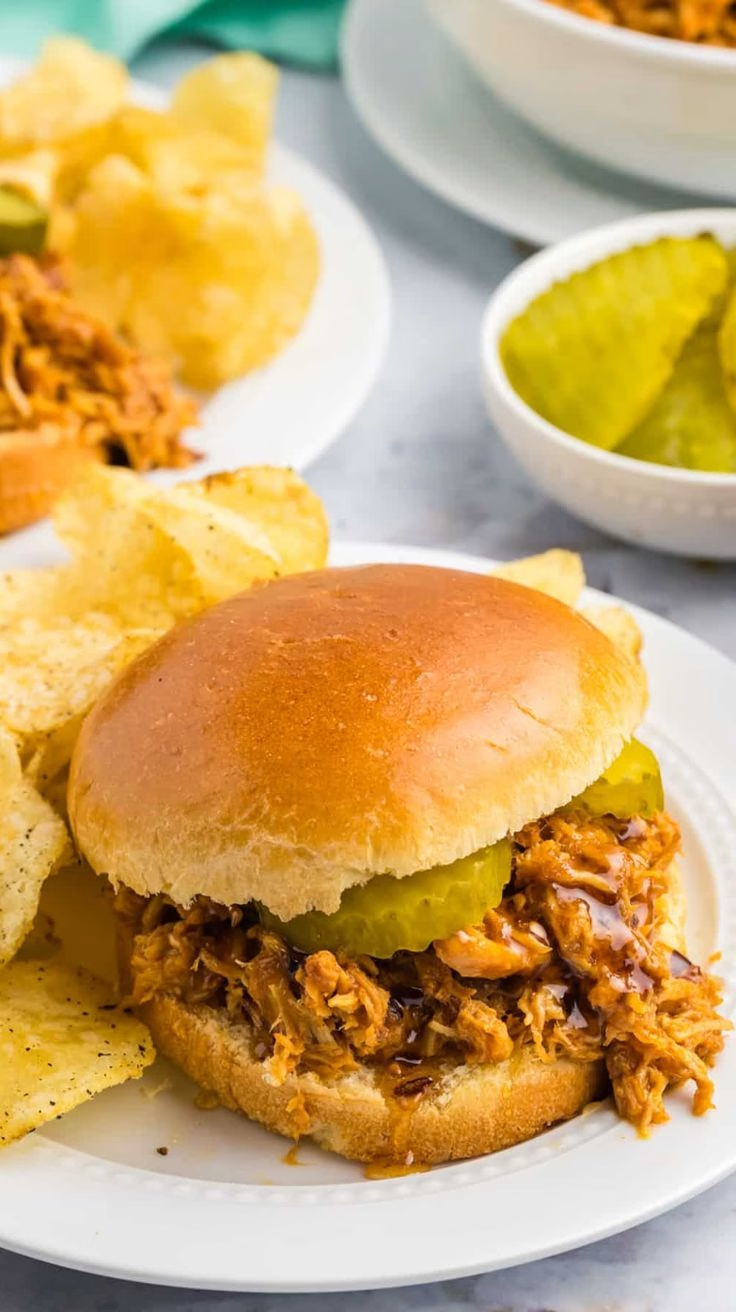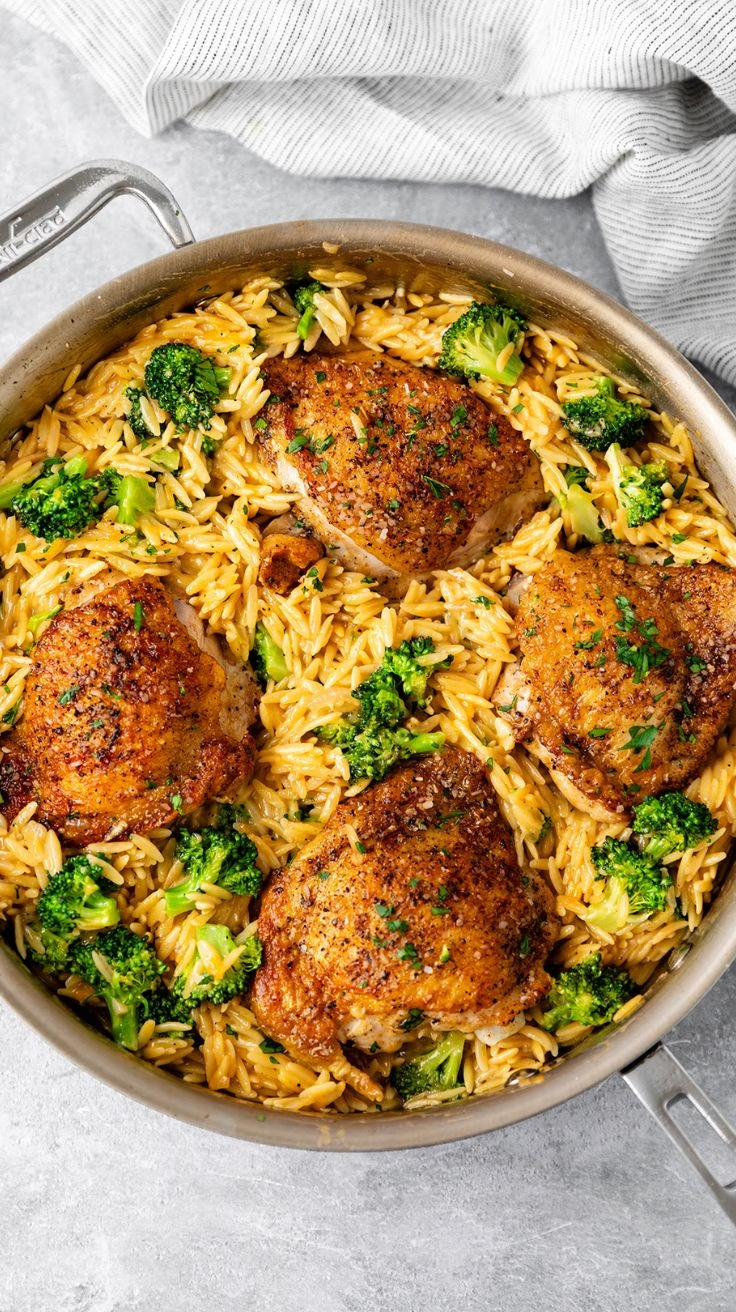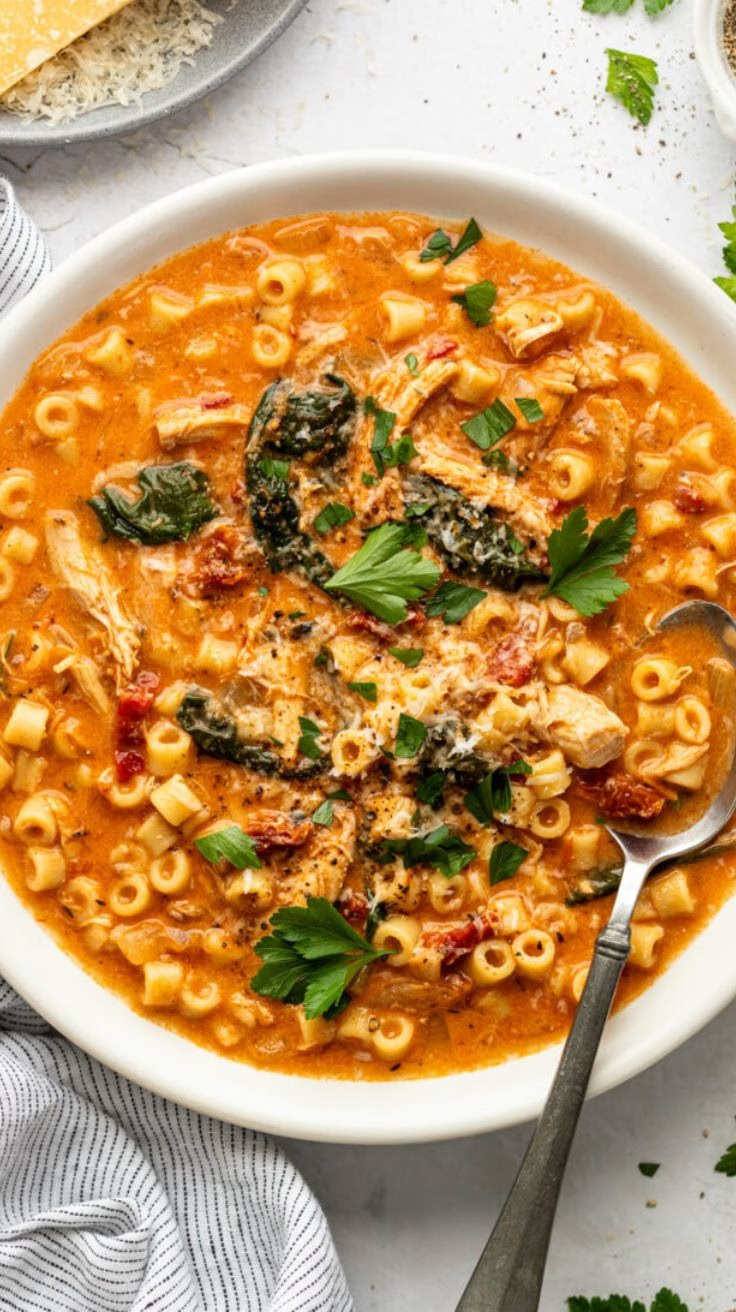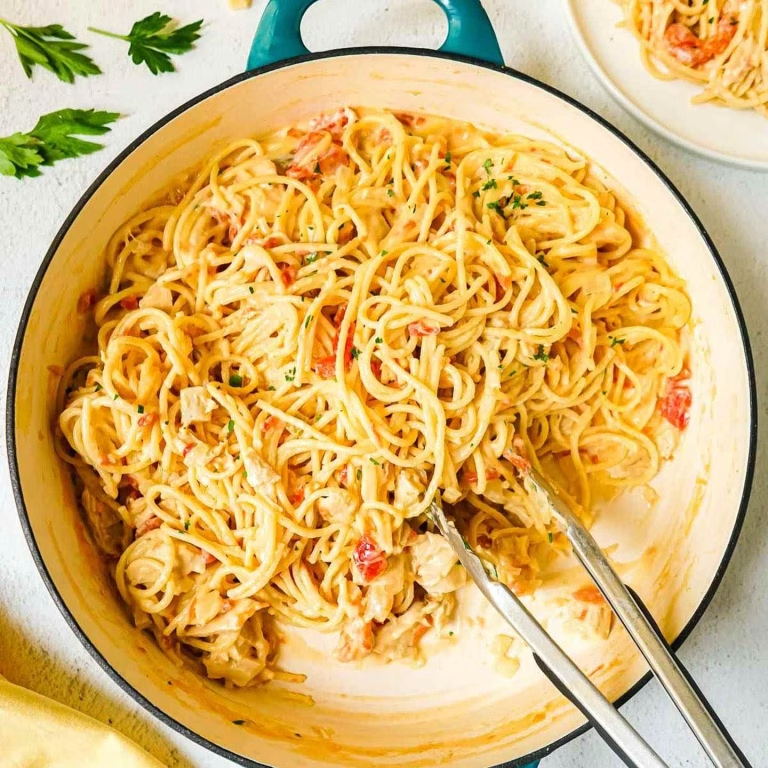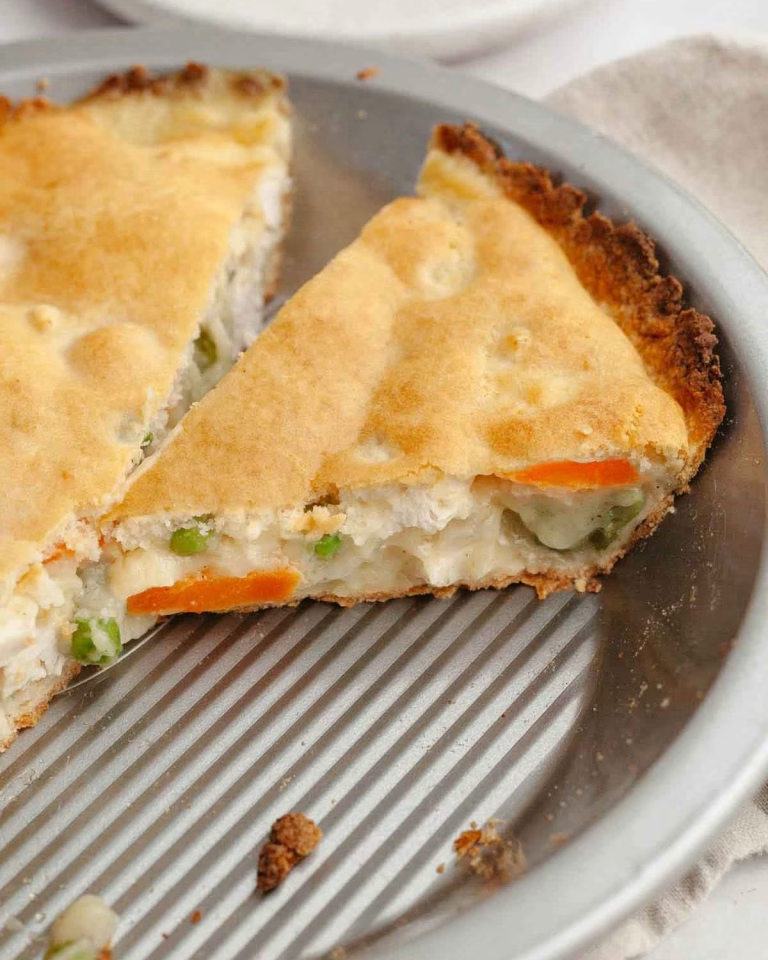
Whenever I think about comfort food that warms both the heart and the belly, a chicken pot pie always comes to mind. And let me be honest—when I found my go-to chicken pot pie easy recipe, it completely changed the way I looked at weeknight meals.
No need for complicated steps or hard-to-find ingredients. Just wholesome goodness tucked into a flaky, buttery crust. If you’ve ever struggled to make your chicken pot pie turn out just right—or if you’re just starting to try it for the first time—then I’ve got you covered.
I’ve made my fair share of pot pies, some better than others, and along the way I picked up a few helpful lessons. I’ll share them here in the hopes it’ll save you time and make your kitchen smell incredible.

Making the Filling Creamier Without Making It Too Thick
One thing I learned early on is that the filling can either make or break your chicken pot pie. When it’s too runny, the crust gets soggy. When it’s too thick, it feels like glue.
The secret for me has been to use a mix of chicken broth and heavy cream or milk—about a 2:1 ratio. Sometimes I’ll toss in a bit of cream cheese for extra richness if I have it in the fridge.
Also, don’t skip the simmering step! Giving your sauce just 5–7 minutes on low heat helps it thicken up naturally and bind the flavors together. And if it gets too thick, a splash of broth brings it right back.
Should I Use Rotisserie Chicken or Cook It Fresh?
Honestly? Use whatever you have. That’s part of what makes the chicken pot pie easy recipe a lifesaver. I personally love using rotisserie chicken because it’s already seasoned and cooked, and it saves me so much time. But if I have leftover grilled or baked chicken, I’ll shred it and use that too.
The only thing I’d avoid is boiled chicken with no seasoning—it just doesn’t bring any flavor to the pie, and you end up having to overcompensate with spices.

Veggies: Fresh, Frozen, or Canned?
I’ve tried all three. Here’s my take:
- Frozen mixed vegetables are my favorite go-to. They’re convenient, pre-chopped, and they cook down perfectly.
- Fresh vegetables work beautifully if you have the time to chop and sauté them.
- Canned vegetables are okay in a pinch, but they can get too soft and mushy. If you use canned, I recommend draining and rinsing them thoroughly.
I usually go with a mix of peas, carrots, corn, and green beans. Sometimes I’ll throw in mushrooms if I want a little more depth.
Tips for the Best Crust (Homemade or Store-Bought)
Let me just say—if you’re short on time, store-bought pie crust is your friend. I use it more often than not, and I don’t feel guilty about it. But here’s the key: always brush the top crust with an egg wash (just a beaten egg with a tablespoon of water). It gives that shiny golden finish that makes the pie look bakery-perfect.
If you’re making your own crust, chill it before using. Cold butter makes a huge difference in achieving those tender, flaky layers. And don’t forget to vent the top crust—just a few slits with a knife helps steam escape and prevents sogginess.
Storage Tips: How Long Does Chicken Pot Pie Last?
If you make a big batch like I often do, you’ll want to know how to store leftovers properly. Here’s what’s worked best for me:
- Fridge: Chicken pot pie keeps well in the refrigerator for 3–4 days. I usually cover it tightly with foil or transfer slices into airtight containers.
- Freezer: Yes, it freezes beautifully. I’ve frozen whole unbaked pies and also leftover cooked portions. If freezing a whole unbaked pie, wrap it in plastic and foil, and bake it straight from frozen—just add 20–25 extra minutes to the baking time.
When reheating, I avoid the microwave if possible. It tends to make the crust soggy. I prefer reheating in the oven at 350°F until warm (usually 20–30 minutes for a slice).
Can I Make It Ahead of Time?
Absolutely. In fact, I do this all the time. You can assemble the whole pie (with the filling cooled down) and keep it in the fridge for up to 24 hours before baking. That way, when you’re ready, you just pop it in the oven, and it’s fresh and hot without all the prep.

Swaps and Variations I’ve Tried
Once you get comfortable with the chicken pot pie easy recipe, it becomes really fun to play around with flavors. Here are a few twists I’ve done and loved:
- Turkey pot pie after Thanksgiving leftovers—tastes just as good.
- Add garlic and thyme for an herbier flavor profile.
- Swap the crust for biscuit topping—drop biscuit dough right over the filling and bake until golden.
- Try puff pastry instead of pie crust. It’s flaky, light, and very fancy-looking.
I’ve even done a mini version in muffin tins—perfect for grab-and-go lunches.
Mistakes I’ve Made (So You Don’t Have To)
There are a few things I learned the hard way, and hopefully, you can skip them:
- Overfilling the pie: Too much filling makes a mess. Leave a little space under the top crust so it doesn’t spill over.
- Not cooling the filling before topping with crust: Hot filling melts the butter in the dough, which ruins the flakiness.
- Using low-fat dairy: I tried once with skim milk—never again. It turned out watery and bland.
- Undercooking the veggies: If they’re not cooked enough before going into the pie, they won’t soften during baking. A quick sauté solves this.

Chicken Pot Pie Easy Recipe
Ingredients
Method
- Start by melting butter in a large skillet or saucepan over medium heat. Once melted, stir in the chopped onion and cook for about 3–4 minutes until the onions are soft and translucent. This is where your filling starts building flavor.
- Next, sprinkle the flour over the onions and butter, whisking continuously to make a smooth roux. Cook this mixture for 1–2 minutes to remove the raw flour taste. Then slowly pour in the chicken broth while whisking, making sure there are no lumps.
- Add in the milk and continue to stir the mixture as it simmers. After about 5 minutes, the sauce should begin to thicken. At this point, fold in your cooked chicken and the thawed peas and carrots. Stir everything together until it’s evenly mixed. Taste and season with salt and pepper as needed.
- Place one of the unbaked pie crusts into a 9-inch pie dish, gently pressing it into the bottom and sides. Make sure there are no air pockets. Spoon the creamy filling into the crust, spreading it out evenly. Try not to overfill, as it can cause the filling to spill out during baking.
- Now, gently lay the second pie crust over the top. Trim any overhanging edges and crimp the sides to seal the pie. Use a sharp knife to cut 3–4 small slits in the center of the top crust. This allows steam to escape while baking and prevents the crust from getting soggy.
- Finally, use a pastry brush to apply the beaten egg all over the top crust. This step gives the pie that golden, glossy finish that makes it look bakery-fresh when it comes out of the oven.
- Preheat your oven to 425°F (220°C). Place the assembled pie on the middle rack and bake for about 30–35 minutes. You’ll know it’s done when the crust is a deep golden brown and you can see the filling bubbling up through the vent slits.
- If the edges of your crust start to brown too quickly, you can cover them with foil or a pie shield halfway through the baking time. This helps ensure even browning without burning the outer crust.
- Once baked, remove the pie from the oven and let it rest for at least 10 minutes before slicing. This allows the filling to set slightly, making it easier to serve.

